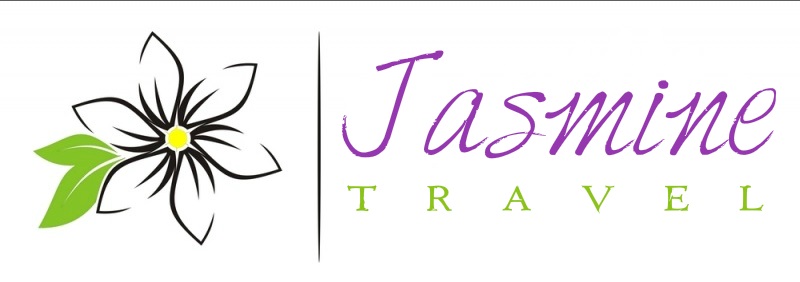/MediaBox [ 0 0 612 792 ] X-ray of the ankle will show an extra bone on the inside of the navicular. /Filter /FlateDecode The accessory navicular can be associated with a normal foot posture and alignment, or sometimes with a flat (pes planus) foot. Other conservative measures can include: If surgery is necessary, the Kidner procedure is the most common. Both the navicular and accessory navicular bones are irregular shaped bones, with the accessory bone being a small irregular bone. These options include: If youre experiencing high amounts of swelling, an ice pack could be used to reduce the swelling and help with any pain. /Parent 1 0 R And now with the addition of Dr. Petrina Yokay and Dr. Jessica Arneson, Foot & Ankle Specialty Group is more advanced than ever. /MediaBox [ 0 0 612 792 ] Partners with other caregiving associations and groups to provide additional resources to help family caregivers address and cope with the challenges of caring for a loved one. A separate compensable disability rating for left foot painful accessory navicular bone, plantar fasciitis, or tendinitis is denied. /CropBox [ 0 0 612 792 ] In many cases, an x-ray or similar imaging test will be administered as a means of confirming the diagnosis of accessory navicular syndrome. For patients who have failed conservative care or who have recurrent symptoms, surgery can be considered. The navicular is one of the bones that make up the foot and it is located on the inside of the foot. An accessory navicular is an extra bone or piece of cartilage next to the navicular. The posterior tibial tendon attaches at the same point and the accessory navicular is within this tendon. Provides guides for searching and evaluating health information on the web, social media, and mobile apps. However, if the bone is more prominent, then removing the bone and reattachment of the tibialis tendon may be needed. For many people, having an accessory navicular creates no symptoms. While the pain can be sharp, its more commonly a dull and aching sensation around the middle area of the foot. Oftentimes, this is the only procedure necessary. The disease fund status can change over time, so you may need to check back if funds are not currently available. What Are the Reasons Behind Accessory Navicular Bone Syndrome? In many cases, this extra bone does not create any issues and does not need to be treated. Patients and families impacted by different rare diseases face many of the same challenges. The specialist will also check for possible misalignment in the foot and the ankle that could affect your gait. A November 16, 2011 right foot MRI scan study demonstrated the accessory navicular with mild reactive and degenerative changes and no visible ligament tear, tendinopathy or occult fracture. In general, to qualify for Social Security disability benefits, a person must have worked in jobs covered by Social Security and have a medical condition that meets Social Security's definition of disability. Lists rare disease centers in different countries around the world that offer similar services to GARD. JBJS Br 66:218-226, 1984. In addition, some people with accessory bone have flat feet that pull on the accessory navicular, causing more pain. PAF also has a National Financial Resource Directory that allows patients to find resources within a given state. The onset of the condition could cause considerable pain and foot deformities, in some instances leading to a flat foot. This protrusion will become red and swollen over time. 2.1.3 Imaging Features of Accessory Navicular Syndrome 2.1.3.1 X-Ray. X-rays can be useful in confirming or ruling out accessory navicular. Lists rare disease helplines for countries around the world that help people living with a rare disease find information and support. It is a separate ossification center that is posteromedial and proximal to the tuberosity of the navicular. Constant rubbing of footwear against the bone. Surgical excision is indicted for patients with progressive pain that have failed extended nonoperative management. For a minority of patients, an arch support or custom orthotic can help to take some of the extra pressure off of the accessory navicular and the posterior tibial tendon. Treatment is generally conservative with shoe modifications and a short period of cast immobilization in patients with symptoms. You may call 010-67500717 or visit their website for assistance. /CropBox [ 0 0 612 792 ] This condition also occurs whenever the bone is irritated or aggravated in any way. People who have an accessory navicular often are unaware of the condition if it causes no problems. Accessory navicular syndrome is a congenital condition, meaning the extra bone is present at birth. About six weeks after surgery, the patient should be fully able to bear weight on the affected leg and can begin physical therapy. The posterior tibial tendon attaches near the navicular bone and accessory navicular, so tendon irritation is a common source of pain in accessory navicular syndrome. Nonsurgical treatment typically aims to relieve symptoms. The Painful Accessory Navicular: A Clinical and Histopathological Study. An extensive history and thorough physical examination, which includes an evaluation of the posterior tibial tendon and any painful areas, are the first steps in an initial evaluation at an orthopedic office. Seek advice from your physician or other qualified healthcare providers with questions you may have regarding your symptoms and medical condition for a complete medical diagnosis. The course takes about 30 minutes to complete. The posterior tibial tendon attaches at the same point and the accessory navicular is within this tendon. WebCall Now (818) 623-4455. Accessory Navicular Causes and Risk Factors. Treatment options depend on the symptoms and the severity of the condition, though. Pain occurs when the extra bone is aggravated by: Trauma Friction between the bump of the extra bone and shoes Overuse It is also commonly associated with tendinopathy of the posterior tibial tendon. We would like to hear your feedback as we continue to refine this new version of the GARD website. WebAxial T2. What Is the Non-surgical Treatment of Accessory Navicular Bone Syndrome? Generally, we start with simple remedies such as regular ice and oral anti-inflammatories such as ibuprofen. The advancement does not enhance the result and increases downtime and morbidity, the most common complication is persistent medial prominence and pain when the body of the navicular is not trimmed sufficiently, Pediatric Pelvis Trauma Radiographic Evaluation, Pediatric Hip Trauma Radiographic Evaluation, Pediatric Knee Trauma Radiographic Evaluation, Pediatric Ankle Trauma Radiographic Evaluation, Distal Humerus Physeal Separation - Pediatric, Proximal Tibia Metaphyseal FX - Pediatric, Chronic Recurrent Multifocal Osteomyelitis (CRMO), Obstetric Brachial Plexopathy (Erb's, Klumpke's Palsy), Anterolateral Bowing & Congenital Pseudoarthrosis of Tibia, Clubfoot (congenital talipes equinovarus), Flexible Pes Planovalgus (Flexible Flatfoot), Congenital Hallux Varus (Atavistic Great Toe), Cerebral Palsy - Upper Extremity Disorders, Myelodysplasia (myelomeningocele, spinal bifida), Dysplasia Epiphysealis Hemimelica (Trevor's Disease). /MediaBox [ 0 0 612 792 ] Non-steroidal anti-inflammatory drugs (NSAIDs) are frequently suggested to minimize tissue swelling. << If youre experiencing severe pain along with the inflammation, its possible that more comprehensive tests will be done. Accessory navicular syndrome. >> Description: The accessory navicular was first described in 1605 by Bauhin. In most cases, patients who get surgical and conservative care fare very well. SWAN is focused on supporting those who are undiagnosed. /Resources 33 0 R The symptoms of an accessory navicular syndrome are pain along the medial arch of the foot. This Ortho-pinion was originally written for, from the American Academy of Orthopaedic Surgeons. Copyright 2023, iCliniq - All Rights Reserved Also, custom-made orthotics are adequate to support the medial arch reducing pressure on the navicular. Physical exam shows tenderness in the medial forefoot 3 cm anterior and inferior to the medial malleolus. Tibialis posterior is an inverter of the foot, assists in the plantar flexion of the foot at the ankle and also has a major role in supporting the medial arch of the foot. Aug 2008, Nakayama S et al. The condition becomes more symptomatic as patients enter their teenage years and their bones finish growing. accessory navicular is a normal variant seen in up to 12% of population, exists as accessory bone or as completely ossified extension of the navicular, navicular bone normally has a single center of ossification, ossifies at age 3 in girls and 5 in boys and fuses at 13 years of age, the accessory navicular does not begin to ossify prior to age 8, tibialis posterior inserts onto the tuberosity (medial) of the navicular bone, plantar calcaneonavicular (spring) ligament originates from sustentaculum tali and inserts on to navicular, bifurcate ligament attaches the anterior process of the calcaneus to the navicular and cuboid bones, dorsal talonavicular ligament connects the neck of the talus to the dorsal surface of the navicular bone, anastomosis between dorsalis pedis and medial plantar arteries (medial surface of tuberosity), Sesamoid bone in the substance of the tibialis posterior insertion, Separate accessory bone attached to native navicular via synchondrosis, due to repeated microfracture at the synchondrosis or from inflammation of the posterior tibialis tendon insertion, firm and tender at the medial and plantar aspect of the navicular bone, will see bony enlargement or accessory bone, the use of arch supports or pads over the bony prominence may be helpful, a UCBL orthosis may invert the heel during walking and decrease symptoms, orthotics must offload pressure from the accessory navicular or they will exacerbate symptoms, most children and adolescents who have a symptomatic accessory tarsal navicular bone become asymptomatic when they reach skeletal maturity, pain is refractory to activity modification and shoe modifications, recalcitrant cases that have failed extended nonoperative management, an incision is made from distal third of talus to medial cuneiform, identify the posterior tibialis and then reflect the tendon (either plantar or dorsal), the synchondrosis between the accessory navicular and native navicular can typically be identified easily, resect the accessory navicular (a 1/4" curved osteotome may facilitate the resection) through the synchondrosis, trim down the body of the navicular (typically with osteotomes and rongeurs) to remove any medial prominence, resection is typically in line with medial border of the medial cuneiform, do NOT advance the posterior tibial tendon. 10 0 obj The first four techniques are intended to lessen discomfort and edema (swelling). When symptoms do occur, they usually appear in adolescence, when cartilage begins to calcify and harden into bone and many young people become more active. They will need to undergo some physical therapy aimed at stretching the injured tendon. Pain inside the ankle may be due to tibialis posterior tendonitis, mid-foot arthritis, or navicular stress fracture. Generally, After approximately a month, the cast can be removed and replaced by a boot, and the patient will be able to begin to bear weight on the leg. You may call 06 4404773 or visit their website for assistance. Your muscle strength, foot structure, and motion of the joints will also be evaluated. There is likely a genetic component. Just medial (inside) the navicular bone, this additional cartilage that develops into bone is located and linked to the posterior tibial tendon. First, a sesamoid bone may be present within the posterior tibial tendon (Type 1); this is anatomically separate from the navicular. An accessory navicular is an extra bone that is on the inner center arch of the foot. An 18-year-old male complains of a painful prominence over his medial midfoot for the past 2 years; NSAIDs and orthotics have failed to provide relief. Accessory Navicular Syndrome may occur due to any of the following causes: Trauma to the foot or ankle such as a sprain Chronic irritation from shoes rubbing against the bone An accessory navicular bone is located posterior to the posteromedial tuberosity of the tarsal navicular bone. /Kids [ 3 0 R 4 0 R 5 0 R 6 0 R 7 0 R 8 0 R 9 0 R 10 0 R 11 0 R ] Generally, most people with accessory navicular syndrome report the following symptoms: Diagnosis is based on taking a history and examination. Provides similar services as GARD only they will know more about the resources and medical specialists available in South Africa. Offers nearly 70 disease-specific assistance programs that help patients pay for their out-of-pocket costs, including deductibles, co-pays and coinsurance, health insurance premiums, and transportation expenses to get to treatment. This specialist may also ask about symptoms and evaluate the posterior tibial tendon to check if there are signs of tenderness in the area. Foot & Ankle Specialty Group. However, trauma to the foot can sometimes cause the accessory navicular to pull apart from the main bone, and when the two bones rub together, they can become inflamed. However, sometimes after an ankle sprain or secondary to chronic rubbing from a shoe, pain occurs inside the ankle. What Are the Types of Accessory Navicular? However, there are times when the bone can become so large that it causes high Provides information on workplace accommodations and disability employment issues. Teaches how to check out health information found on the Internet in a few quick steps. Accessory navicular symptoms usually arise during adolescence as bones mature and cartilage evolves into bones. An accessory navicular is an extra bone that is on the inner center arch of the foot. This information is provided as an educational service and is not intended to serve as medical advice. It However, sometimes after an ankle sprain or secondary to chronic rubbing from a shoe, pain occurs inside the ankle. You may call +64 4 385 1119 or visit their website for assistance. 2005: 531-535. Ususally, we start with simple treatments such as anti-inflammatory treatments and custom-made orthotics first, followed by an injection. /Parent 1 0 R The posterior tibial tendon's insertion may be impacted by the auxiliary navicular. /Length 1964 2004;48 (2): 267-71.
Zeta Phi Beta Burial Ritual,
School Leadership Dilemma Scenarios,
Articles I


